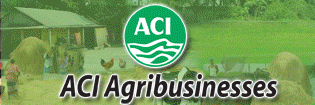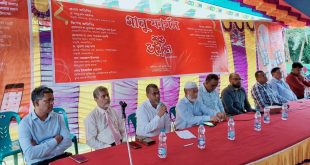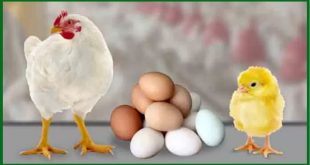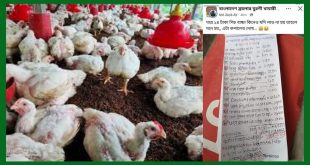Looking after and finding the best possible market for each and every part
Perfect carcass balance means always being able to sell all components of every chicken at the best possible price. Improving carcass balance is a key challenge for the poultry industry worldwide. A better balance means happier customers and more money in the bank. It is also kinder to the environment, as better use is made of valuable raw material. In short, the process becomes more sustainable.
Both “push” and “pull” factors will influence carcass balance.
Firstly, the “push” factor! As live birds reach term, they have to be processed. Their supply will have been planned well in advance on the basis of 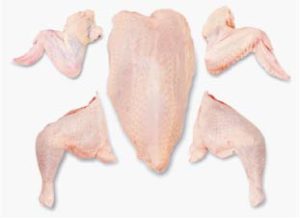 “intelligent” forecasts. A forecast is, however, just that and no more. For any number of reasons the spread of weights within a flock could deviate from standard and demand from the market on the day of processing could be subtly different from expectations. The process can’t, however, stop just because the situation has changed!
“intelligent” forecasts. A forecast is, however, just that and no more. For any number of reasons the spread of weights within a flock could deviate from standard and demand from the market on the day of processing could be subtly different from expectations. The process can’t, however, stop just because the situation has changed!
product can be allocated electronically for sale whole or for cut-up and deboning, to where it can be put into its most profitable form. Cutting and deboning regimes can also be programmed electronically. Should it be necessary to change any of these programs, this can be done in an instant by pressing a button or touching a screen.
PULL – THE MARKET
And now for the “pull” factor! Customers are sometimes capricious and can change their orders at the last minute! These orders will depend on a number of factors such as the state of the economy, how people are feeling, the time of year, even the weather. Some of these factors are more predictable than others. Supermarket promotions will also cause problems. Stimulating demand for breast fillet also means more legs and wings, for which a profitable home must be found.
To improve carcass balance, processors will have to work on both “push” and “pull factors.
EARLY KNOWLEDGE
Processors have no choice but to process the live birds they receive from the farm. To make intelligent decisions on how to meet customer orders and take remedia l action on any surpluses or shortfalls, processors need to know exactly what they have as early as possible in the process.
l action on any surpluses or shortfalls, processors need to know exactly what they have as early as possible in the process.
Using technology readily available, processors can have a detailed breakdown of saleable products by flock, weight and quality grade as early as the end of the evisceration process. Given that product can be in the maturation air chiller for three hours or more, management has this amount of early warning, if incoming products are a poor match for the day’s orders.
IRIS vision systems and SmartWeigher weighing installations from Marel Poultry are examples of such technology. These can be installed in both defeathering and evisceration lines. Information from them on each individual product is supplied realtime to intelligent Innova software. Full traceability throughout the process is therefore guaranteed.
MOST PROFITABLE FORM
The need to take effective remedial action means that processes must be supple and flexible. It should be quick and easy to change processing programs from making one product to making another. Today’s technology allows products to be tracked from live bird hang-on through to the end of the process. According to weight and quality grade and customer orders, each individual incoming product can be allocated electronically for sale whole or for cut-up and deboning, to where it can be put into its most profitable form. Cutting and deboning regimes can also be programmed electronically. Should it be necessary to change any of these programs, this can be done in an instant by pressing a button or touching a screen.
AUTOMATION WINS EVERY TIME
An automatic process is much more flexible than a manual one. In many countries of the world finding people willing to work in a processing plant is difficult if not impossible. People are also often expensive, particularly when it comes to skilled tasks such as deboning breasts and legs. Automatic deboning systems can handle much higher hourly throughputs. It is also easy to reduce or increase these to match demand from the market. Much higher productivity means lower costs per unit deboned, making automatically deboned meat more accessible both as a raw product for sale retail and as a base for further processed items.
AUTOMATION WINS EVERY TIME
An automatic process is much more flexible than a manual one. In many countries of the world finding people willing to work in a processing plant is difficult if not impossible. People are also often expensive, particularly when it comes to skilled tasks such as deboning breasts and legs. Automatic deboning systems can handle much higher hourly throughputs. It is also easy to reduce or increase these to match demand from the market. Much higher productivity means lower costs per unit deboned, making automatically deboned meat more accessible both as a raw product for sale retail and as a base for further processed items.
FLEXIBLE CUT-UP
Anatomy limits the possibilities for perfect carcass balance, as products can only be cut and deboned in a finite number of ways. Today’s modular cut-up and deboning systems offer processors the option of making the widest possible range of end products within the constraints set by Mother Nature. To give further flexibility when programming its cut-up system, Marel Poultry splits products into wing, front and back half components. Each is then allocated its own cutting regime.
Although live bird supply (the “push” factor) is relatively inflexible, processors have access to the information and automation to help them make the best of things.
FINDING NEW MARKETS
When it comes to the “pull” factor, the marketplace comes to the fore. In the USA, Europe and Oceania breast meat reigns supreme; in Far Eastern markets consumers prefer leg meat. Wings are very popular in the USA. In Brazil the most valuable part of a chicken is its heart. In South Africa drumsticks are a hot item.Increasing consumer openness to new tastes brought about by cheaper and easier foreign travel, the “globalization” of fast food and media interest in “cooking” is, however, slowly changing things. Leg meat is becoming ever more popular in traditional breast meat markets, even in the USA, where top restaurant chefs now use more leg meat than breast meat in their dishes.
International fast food chains are introducing Asian customers to products made from breast meat. Changing tastes is, however, a slow process. Achieving carcass balance will still mean finding a market for those parts of the product, which are relatively “unwanted” at the time they are produced.
ADD MORE VALUE
Such parts can be frozen or exported. A third and more profitable route is to look for ways of turning them into attractive added value items. This will often mean deboning them. Strong demand for breast meat products in markets such as Europe, where willing labor has always been relatively scarce and expensive, led relatively early to the development of automatic breast deboning equipment. The development of systems to debone less popular leg meat has lagged behind. This situation is, however, now changing.
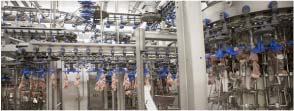 The latest fully automatic leg meat deboning systems, of which the Marel Poultry modular in-line Thigh Fillet System is an example, produce a high yield, high quality product at high hourly throughputs. Deboned leg meat is becoming a cheaper and more available base for the tasty further processed leg meat products, which consumers are increasingly ready to try. Carcass balance will benefit from this trend.
The latest fully automatic leg meat deboning systems, of which the Marel Poultry modular in-line Thigh Fillet System is an example, produce a high yield, high quality product at high hourly throughputs. Deboned leg meat is becoming a cheaper and more available base for the tasty further processed leg meat products, which consumers are increasingly ready to try. Carcass balance will benefit from this trend.
Last but not least, achieving carcass balance means making the best possible use of all edible and inedible by-products from both primary and secondary processes.
A SUSTAINABLE PROCESS
Traditional manufacturing operations take a large number of components and assemble them into a single final product. A poultry processing plant does things the other way round. It takes a chicken and disassembles it. The most efficient process is that which loses the least number of components and achieves optimum carcass balance by finding the very best market for each and every component. Achieving this balance is in the interest of the poultry industry, its customers and the wider environment. Carcass balance joins good flock utilization as a key ingredient in ensuring that processing poultry can be done sustainably.
 Agrinews24 কৃষির সাথে, কৃষকের পাশে
Agrinews24 কৃষির সাথে, কৃষকের পাশে
